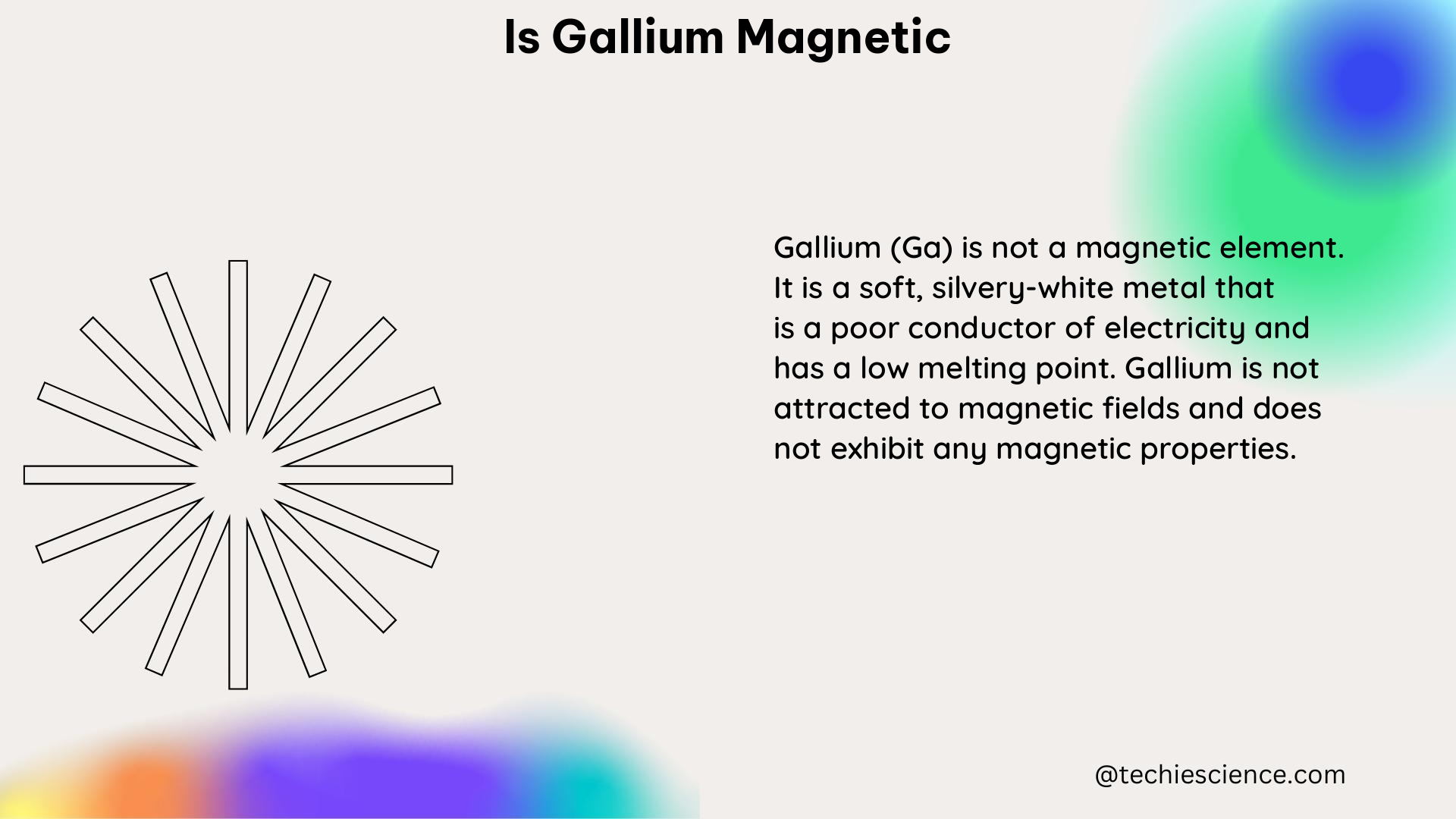Gallium, a remarkable liquid metal, has been found to exhibit intriguing magnetic properties, despite its seemingly non-magnetic nature under normal circumstances. This unique behavior is attributed to the presence of magnetic moments that appear and disappear on an extremely short timescale, a phenomenon known as “cage diffusion.”
Understanding Cage Diffusion
The phenomenon of cage diffusion is the key to understanding gallium’s magnetic properties. In a liquid, an atom can become confined within a “cage” formed by its neighboring atoms. Within this cage, the atom can acquire a magnetic moment due to the ejection of an electron from a filled inner shell, resulting in an unpaired electron.
The magnetic moment of the atom fluctuates in and out of existence on the same timescale as the atom’s movement within the cage. This is because once the ions move away from each other, the shell fills up again, causing the magnetic moment to disappear.
Neutron scattering experiments and molecular dynamics simulations have revealed that cage diffusion occurs on picosecond (10^-12 s) timescales, while self-diffusion, the overall movement of the atom, takes much longer. This rapid fluctuation of magnetic moments is the reason why gallium exhibits magnetic properties.
Quantifying Cage Diffusion

Researchers have used neutron scattering data and molecular dynamics simulations to quantify the cage diffusion phenomenon in gallium and other liquid metals.
Neutron Scattering Experiments
Neutron scattering experiments have provided valuable insights into the magnetic behavior of gallium and other liquid metals. These experiments have shown that the ions in gallium, aluminum, and lead exhibit a large effect similar to mercury, which has unpaired electrons for up to 20% of the time.
The neutron scattering data can be analyzed to determine the timescales and characteristics of the cage diffusion process. For example, the neutron scattering data for gallium suggests that the magnetic moments appear and disappear on picosecond timescales, while the overall self-diffusion of the atoms occurs on much longer timescales.
Molecular Dynamics Simulations
Molecular dynamics simulations have also been used to study the cage diffusion phenomenon in gallium and other liquid metals. These simulations can provide detailed information about the atomic-scale dynamics and the formation and disappearance of magnetic moments within the cages.
The simulations have shown that the cage diffusion process in gallium is highly dynamic, with the atoms constantly bouncing off their neighbors and the magnetic moments appearing and disappearing on picosecond timescales.
Other Notable Properties of Gallium
In addition to its magnetic properties, gallium has several other remarkable physical properties that make it a unique and versatile material.
Low Melting Point
Gallium has a remarkably low melting point of 29.76°C, which means it is a liquid at room temperature. This property makes gallium useful in various applications, such as in thermometers and temperature-sensitive devices.
High Boiling Point
Despite its low melting point, gallium has a high boiling point of 2403°C. This wide range between the melting and boiling points makes gallium a useful material for applications that require a liquid state over a broad temperature range.
Density and Vapor Pressure
Gallium has a density of 6.095 g/cm^3 at 20°C, which is relatively high for a liquid metal. Additionally, gallium has a low vapor pressure, meaning it is less likely to evaporate compared to other liquid metals.
Reactivity with Oxygen
Gallium is highly reactive with oxygen, forming a thin oxide layer upon exposure to air. This oxide layer can protect the underlying gallium from further oxidation, making it useful in certain applications.
Electrical Conductivity
Gallium is known for its excellent electrical conductivity, which makes it suitable for use in various applications, such as fluidics, printed circuits, flexible sensors, transformable machines, self-driving motors, and base carrier fluids for magnetic particles.
Applications of Gallium’s Magnetic Properties
The unique magnetic properties of gallium have led to the development of various applications that take advantage of this behavior.
Fluidic Devices
The magnetic moments in gallium can be used to create fluidic devices that can be controlled and manipulated by external magnetic fields. These devices can be used in applications such as microfluidics, lab-on-a-chip systems, and transformable machines.
Magnetic Particles and Fluids
Gallium can be used as a base carrier fluid for magnetic particles, creating magnetic fluids with unique properties. These magnetic fluids can be used in applications such as self-driving motors, flexible sensors, and transformable machines.
Printed Circuits and Flexible Electronics
The excellent electrical conductivity of gallium, combined with its magnetic properties, makes it a suitable material for use in printed circuits and flexible electronics. These applications can take advantage of the dynamic and responsive nature of gallium’s magnetic moments.
Conclusion
Gallium, a remarkable liquid metal, exhibits intriguing magnetic properties due to the phenomenon of cage diffusion. This process, where atoms in the liquid acquire and lose magnetic moments on picosecond timescales, is the key to understanding gallium’s unique behavior. By leveraging these magnetic properties, researchers and engineers have developed a range of applications, from fluidic devices to flexible electronics, showcasing the versatility and potential of this fascinating material.
References:
– Magnetic surprise for liquids – Physics World
– Magnetic Field-Induced Recoverable Dynamic Morphological Transformations in Liquid Gallium
– Insights into fluidic endogenous magnetism and magnetic field-induced morphological transformations in liquid metals
I am Keerthi K Murthy, I have completed post graduation in Physics, with the specialization in the field of solid state physics. I have always consider physics as a fundamental subject which is connected to our daily life. Being a science student I enjoy exploring new things in physics. As a writer my goal is to reach the readers with the simplified manner through my articles.